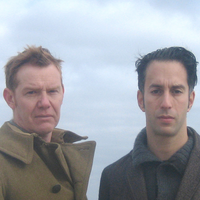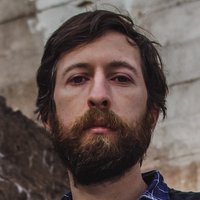On finding resources in unexpected places
Prelude
Born in Singapore, filmmaker and writer Sandi Tan published a cult zine called The Exploding Cat at age 16, and at age 22 became the film critic at The Straits Times, Singapore’s largest newspaper. She then attended film school at Columbia University, and her short films Moveable Feast and Gourmet Baby have played at over 100 film festivals including the New York Film Festival, Clermont-Ferrand and at venues like MoMA. She is the author of The Black Isle (Hachette USA), a novel that re-imagines Singapore’s 20th century as a ghost story. She was a 2016 Sundance Documentary Film Program Fellow and a 2017 Sundance Creative Producing Fellow. Her film Shirkers made its world premiere at the 2018 Sundance Film Festival where she won a Directing award, and the film was acquired by Netflix Originals. She was named one of Variety’s “10 Documentary Filmmakers to Watch” of 2018 and one of Indiewire’s “20 Rising Female Directors of 2018.”
Conversation
On finding resources in unexpected places
Filmmaker and writer Sandi Tan discusses her wild career path, the decades-long development of her first film, and why getting closure is ultimately overrated.
As told to Miriam Garcia, 2497 words.
Tags: Film, Process, Beginnings, First attempts, Adversity, Inspiration.
When you were 16 years old you had an enormous creative curiosity. At that time you lived in Singapore, where the environment was rigid, but you found a way to write scripts and discover foreign movies. You also found a community with the same interests as you. Do you think that the environment and circumstances are important when you are determined to create something?
I think it’s so important to use everything to your own advantage, to do the mental Jiu-jitsu to take all the negatives and all the things that you’re lacking and turn them into positives. I grew up in a family that was not very happy, so I was left to my own devices and my own imagination. I was surrounded with grownups who were going through all sorts of things and I started to find that fascinating. I find people fascinating. Even before I knew I was interested in storytelling I began to become a storyteller, an observer. A lot of those things—like having a creative environment in terms of encouraging teachers or peers, or having access to a great abundance of inspiring people—are not the only option. If you’re open to ideas, or at least you’re interested in finding a way of surviving your environment, you can find great resources in the most unexpected places, and that’s often within things and situations that might not be ideal.
A lot of the greatest writers, filmmakers, and storytellers I admire come from backgrounds that aren’t perfect. When you come from the perfect background you won’t have a unique take on the world. I think it’s very encouraging for everybody out there to know that your unique background, which you might think is a disadvantage, is actually your advantage because that’s the thing that makes you unique.
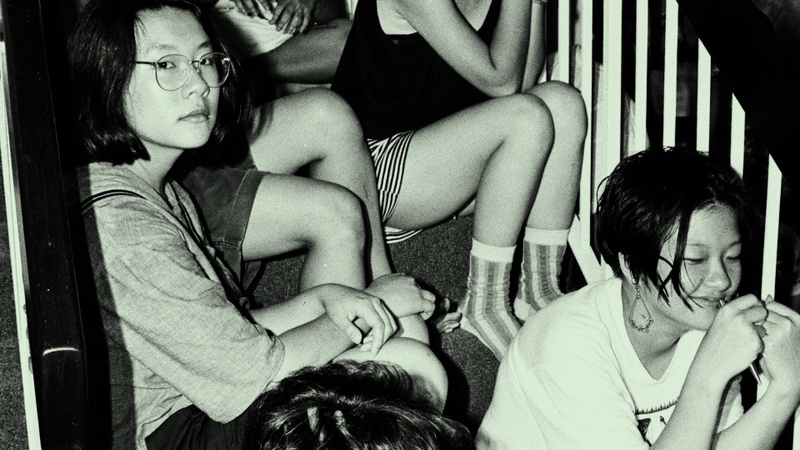
Since you were a teenager you knew that you wanted to make films, however your path was not linear. You made a film first, later you became a film critic, and after that, you attended film school. Would you change anything about these choices?
It really wasn’t a matter of choice. In my case, there was no such thing as just making films. I felt like I had my one shot when I was making Shirkers as a teenager—and that failed—so I had to find my way again, and it wasn’t easy. So the closest I could get to movies was writing about them. In the ’90s when I was in film school, indie films were dying because they weren’t viable. So I had to find other ways. I wrote screenplays, but the kinds of stories I wanted to tell were kind of epic and involved some special effects. They were going to be so expensive that I knew there was no way I could make them, so instead I wrote a novel in 2012 called The Black Isle. This was another way of just keeping my stories going. I think you have to be very nimble and, if you’re a storyteller, you need to find different formats in which you can tell your stories. As long as you keep your storytelling muscles strong and if you’re nimble and can adapt yourself to the situation, you’re in a good place.
Everybody should find their own path. Don’t expect it to be linear. Interesting paths are interesting paths, and if you’re patient and persistent enough and if you keep pursuing your goal you will reach it. The linear path is often the least interesting. You never know what your path is going to be because there are so many factors at play. It’s not just about your talent, it’s not just about luck. There are so many other things in the air, and you just have to keep going.
Something that I really appreciate from your film Shirkers is that it catches the audience from so many angles. It’s for film lovers, for any creative person who has trouble with finishing something or who had something taken away from them. Were you hoping to approach a particular angle with your film?
No, I wanted to tell all of it. I had such an ambitious scope for it. I just wanted to tell the chronological story of what actually happened. I wanted to solve the central mystery of my life. And in solving this puzzle, I had to explain all the other bits with all the clues, and in aligning all the clues on the map, once I was kind of building up, the entire treasure map of Shirkers appeared. The film could not exist without all these parts.
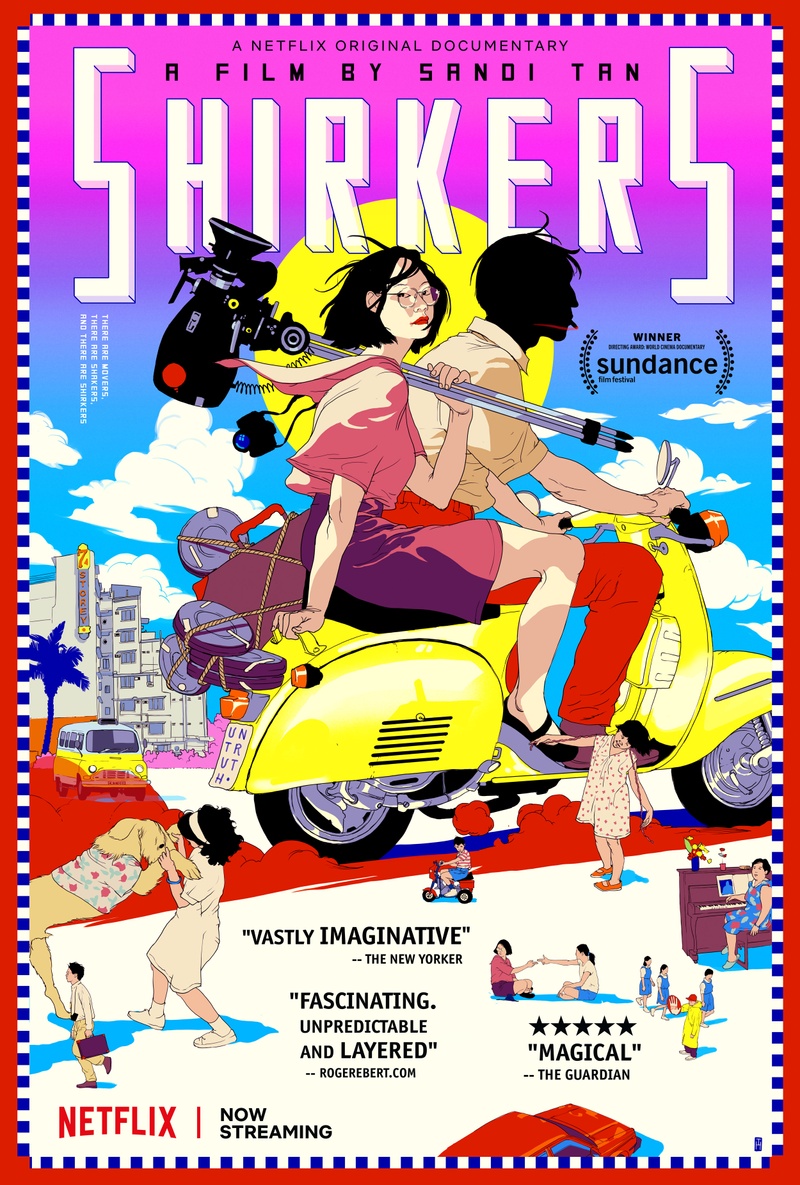
When we’re teenagers it’s so natural to be driven, determined, and open to the possibilities that imagination can bring. The risk of failing doesn’t seem so absolute. Do you think you’re the same film enthusiast you were as a teenager, or have some feelings faded away as you have gotten to know the film industry better?
Of course I’m the same film enthusiast! Making this film has reacquainted me with my former self, and I feel that this is actually me, and making the film is like me singing a duet with my teenage self. I’m empowered and strengthened by the youthful me. The fearless, optimistic, adventurous, younger version of me is very much a part of me now. I want everybody who watches the film to realize that you can be all your different selves. You don’t have to be like this grownup self versus the naïve, innocent self. It’s not that. They are all part of you still going forward. It’s up to you if you want to take these former selves with you on your journey.
Your documentary Shirkers tells quite a remarkable story—it’s so impressive and hard to believe. How were you able to find funding and support? A lot of funding opportunities for documentaries go to films that focus on politics or social justice issues.
Getting funding is extremely challenging. You have to find the right kind of nonprofit partners. Sundance invited me to be part of their documentary fellowship program in 2016 and I took several meetings with a lot of people that became valuable partners to know for the future. Also, a lot of this process of making a documentary is about pitching, because most docs don’t even have a script. You don’t have anything. If you’re going to go out and try to make things real to people, you have to be a very convincing talker, and you have to be very confident in talking about yourself and your project because if you’re not confident about your project you can’t expect anyone else to be confident in it. So that fellowship program was a game-changer for me because I met a lot of people that I wound up then either working with or just knowing as colleagues in the industry.
I also applied to the Sundance Documentary Program for a development grant, and once I had the footage I put together a trailer and some music. I spent a lot of time writing out the proposal, and they gave me a development grant. Once you get that grant from Sundance it’s a lot easier to get other things. I also had support from Cinereach which has a good track record of investing in interesting projects. They’ve invested in Sorry to Bother You, We the Animals, and in some interesting documentaries like Dina as well.
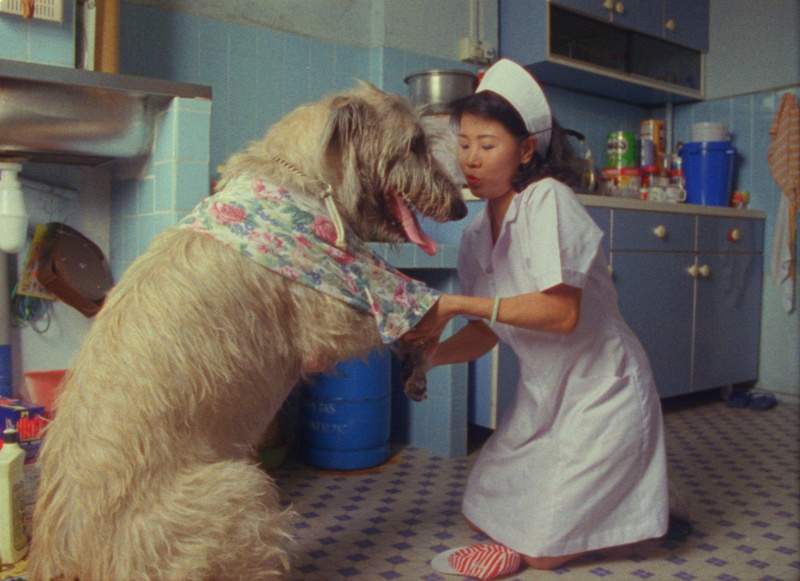
NURSE WITH DOG MASTER, STILL
When you’re developing a project, is it a good strategy to share the idea as it starts to emerge, or is it better to keep it to yourself and share it after it starts taking shape?
Sometimes when you talk too much about something that’s not even ready to be talked about you’re kind of destroying the magic of it. It will disintegrate before your eyes. Maybe I’m superstitious, but I don’t believe in talking about things that aren’t ready to be talked about because you’re jinxing it. I think it’s better to talk about something when it’s concrete rather than speculative.
You were forced to abandon the first Shirkers film. What made you decide it was worth going back and rescuing it?
It was like being given both a gift and a curse. When this footage was returned to me it was like a call to adventure. It was the traditional hero’s narrative: Was I going to answer the call to adventure or was I going to say no? When this opportunity came to my door, how could I say no? I had to embark on it and be open to whatever it brings. I knew it was going to take me down a rabbit hole for at least three years, but that’s why I had to get ready for it. So, I took another three years after the boxes arrived to fortify myself before I began dealing with it.
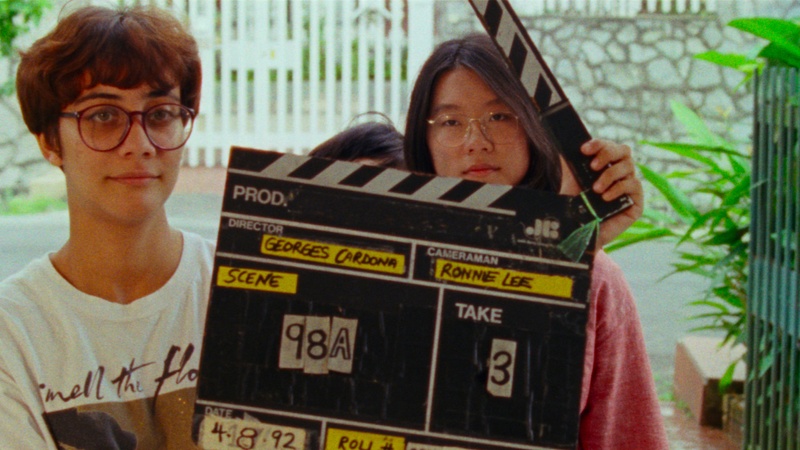
I was at the panel where you participated in last year’s DOC NYC, and you mentioned that a film is as good as the collaboration between the people involved. What do you look for in your collaborators?
With Shirkers, it was my vision, so they had to be very open to working with me. I was looking for people who were not the usual suspects, who didn’t go by the usual routes. For example, my composer Ishai Adar is self-taught, he didn’t go to music school. He had a band that was a cult band. Like Joy Division, but in Israel in the ’90s or ’80s. He’s from that kind of background, but he makes self-taught electronica. I like people who are more open and creative, who will be much more free, open, and willing to go with me and try out things. I think it’s very important to have collaborators who listen to you, who have time, who aren’t just doing it for the money, and not doing it in a hurry. People who are willing to experiment and try new things. That’s the only way you can create interesting results if you are willing to try.
If you’re going to make a film that no one’s done before, then the disadvantage is that it’s going to be very hard to convince people to come and be your producer or to give you money. But the advantage is that you have complete freedom and you can figure it out on your own. If you’re going to try something and do something new, then you have to be brave enough to know that you have to make your own rules. It’s going to feel more challenging because you won’t have guidance, but if you’re lucky and you work hard enough then the results will make it worth it.
In the documentary Shirkers, you showed the dynamic and complexity between you and your friends by also including times when you disagreed or even disliked each other. Did you show that with a particular intention?
I wanted to reflect what it was like to be friends with people over a long time and what a creative rupture does to friendships. This is authentically how we talked. I think a lot of people have friends and friendships like that. And very often what we see in documentaries is not real. What we see in TV shows or movies about friendships is not real, and doesn’t feel real. I wanted this film to really capture what these relationships are like. Iris NG, the DP that I hired and who also shot Sarah Polley’s Stories We Tell, she kind of vanished into the background when she was shooting my conversations with my friends so it was as if she wasn’t there. You feel like you’re watching me and my friends talk as if nobody was there. This is what it really is like. I wanted everyone who has friends like that, to know that they’re not alone and to know that this is still friendship. It’s just that friendship is defined very broadly.
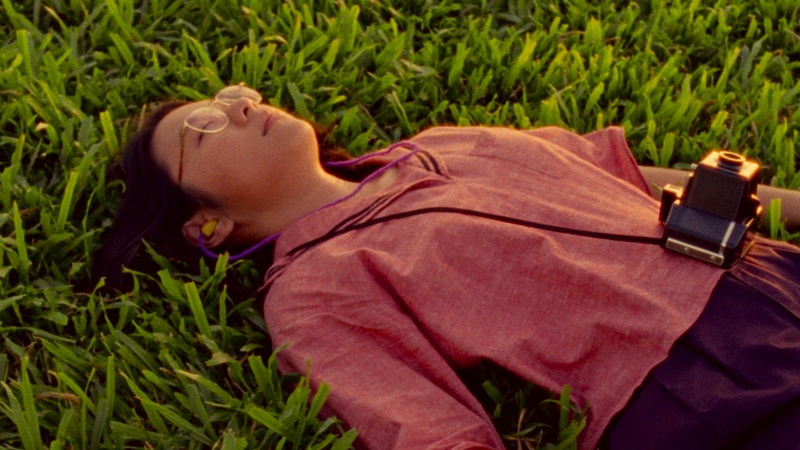
When I was reading about your film, the word “closure” appeared frequently. Is closure something that we need in order to move on, or can other positive things emerge from the uncertainty or loose ends of an unfinished project?
You find closure in different ways, and I don’t think things necessarily need to be closed. There are so many ways of moving on. You can just feel inspired to move on because you want to keep searching for answers. Closure is a very hard thing to define for everyone. I don’t like the word closure because it’s so definitive, it seems like the final nail in the coffin, it blocks things. I don’t like blockages, I don’t like endings, I don’t like things that just say, “Goodbye. The end.” I like things that are a bit more open, not just for interpretation, but for you to open up new avenues and new ideas.
Sandi Tan recommends:
-
The film My Winnipeg by Guy Maddin. It’s a great, wonderful, and very creative film. Guy Maddin calls it a docu-fantasia. It’s a one-of-a-kind personal documentary about his hometown, and himself and his family.
-
The documentary Tarnation by Jonathan Caouette. It was a cult sensation 15 years ago.
-
I’m a fan of Leos Carax. I would recommend his film Lovers on the Bridge. It’s an early film with Juliette Binoche and Denis Lavant, and it’s a remarkable chronicle of a romance in a very unconventional style and tone. It is important for creative people to watch things that will free your mind. I programmed this film at the Metrograph in New York in September and every screening was sold out. The film is from 1991 but it still feels extremely new today. I highly recommend that film to people who just want to have their minds blown.
-
David Lynch’s Fire Walk with Me is another film I really love and watch every year. It is a heartbreaking film about Laura Palmer.
-
And if you get the Criterion disc of Fire Walk with Me there’s an accompanying film called The Missing Pieces that David Lynch made of all the parts that didn’t make Fire Walk with Me. It’s like Laura Palmer’s story, but includes the more intense bits, the weirder parts that couldn’t even make it to Fire Walk with Me.
- Name
- Sandi Tan
- Vocation
- Filmmaker, Editor, Writer, Producer, Former Film Critic
Some Things
Pagination
